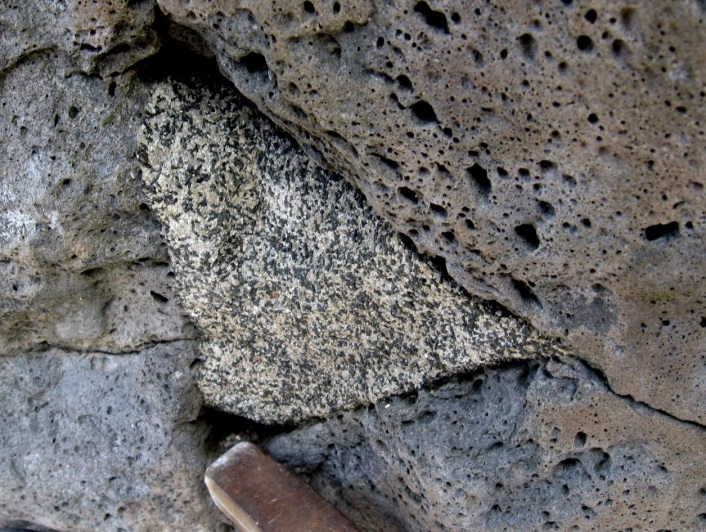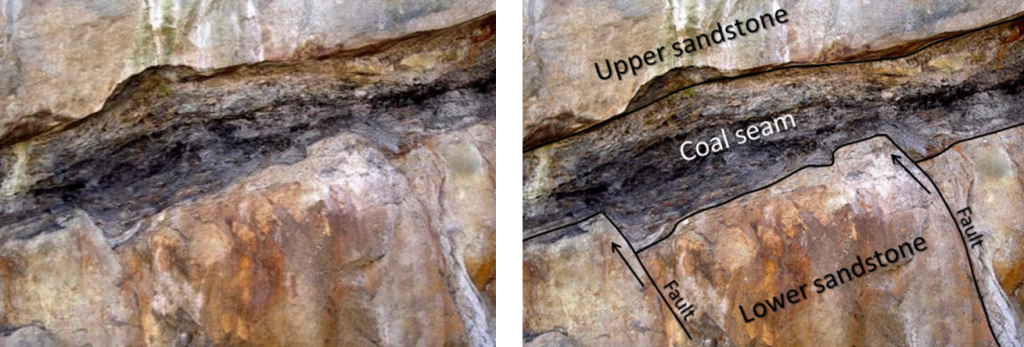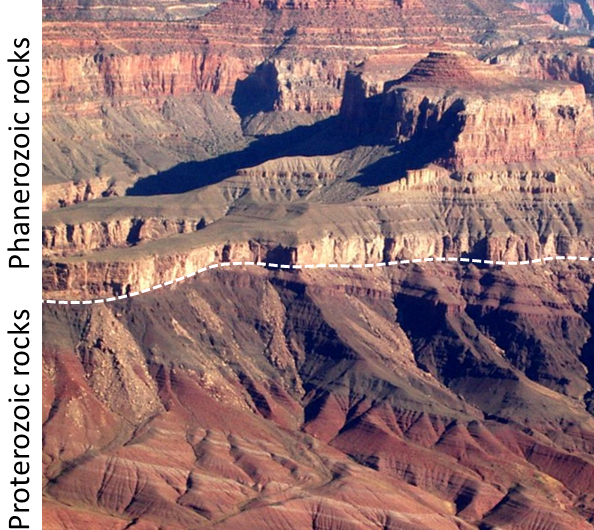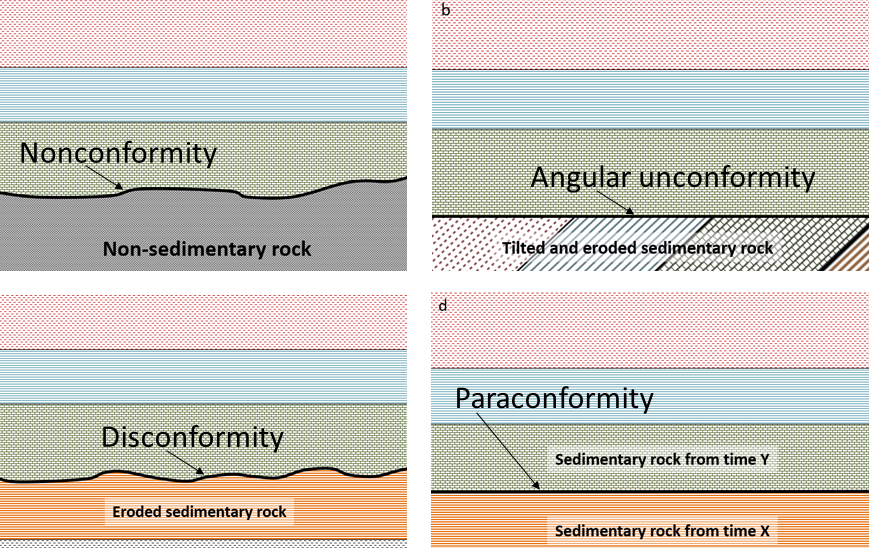63 8.2 Relative Dating Methods — Physical Geology – 2nd Edition
8.2 Relative Dating Methods

The principle of cross-cutting relationships states that any geological feature that cuts across, or disrupts another feature must be younger than the feature that is disrupted. An example of this is given in Figure 8.2.2, which shows three different sedimentary layers. The lower sandstone layer is disrupted by two faults, so we can conclude that the faults are younger than that layer. But the faults do not appear to continue into the coal seam, and they certainly do not continue into the upper sandstone. So we can infer that coal seam is younger than the faults (because it cuts them off), and of course the upper sandstone is youngest of all, because it lies on top of the coal seam.

The outcrop shown here (at Horseshoe Bay, B.C.) has three main rock types:
- Buff/pink felsic intrusive igneous rock present as somewhat irregular masses trending from lower right to upper left
- Dark grey metamorphosed basalt
- A 50 centimetres wide light-grey felsic intrusive igneous dyke extending from the lower left to the middle right – offset in several places
Using the principle of cross-cutting relationships outlined above, determine the relative ages of these three rock types.
(The near-vertical stripes are blasting drill holes. The image is about 7 metres across.)
See Appendix 3 for Exercise 8.1 answers.
An unconformity represents an interruption in the process of deposition of sedimentary rocks. Recognizing unconformities is important for understanding time relationships in sedimentary sequences. An example of an unconformity is shown in Figure 8.2.4. The Proterozoic rocks of the Grand Canyon Group have been tilted and then eroded to a flat surface prior to deposition of the younger Paleozoic rocks. The difference in time between the youngest of the Proterozoic rocks and the oldest of the Paleozoic rocks is close to 300 million years. Tilting and erosion of the older rocks took place during this time, and if there was any deposition going on in this area, the evidence of it is now gone.

There are four types of unconformities, as summarized in Table 8.1, and illustrated in Figure 8.2.5.
| Unconformity Type | Description |
|---|---|
| Nonconformity | A boundary between non-sedimentary rocks (below) and sedimentary rocks (above) |
| Angular unconformity | A boundary between two sequences of sedimentary rocks where the underlying ones have been tilted (or folded) and eroded prior to the deposition of the younger ones (as in Figure 8.2.4) |
| Disconformity | A boundary between two sequences of sedimentary rocks where the underlying ones have been eroded (but not tilted) prior to the deposition of the younger ones (as in Figure 8.2.2) |
| Paraconformity | A time gap in a sequence of sedimentary rocks that does not show up as an angular unconformity or a disconformity |

Media Attributions
- Figures 8.2.1ab, 8.2.2, 8.2.3, 8.2.4, 8.2.5: © Steven Earle. CC BY.

